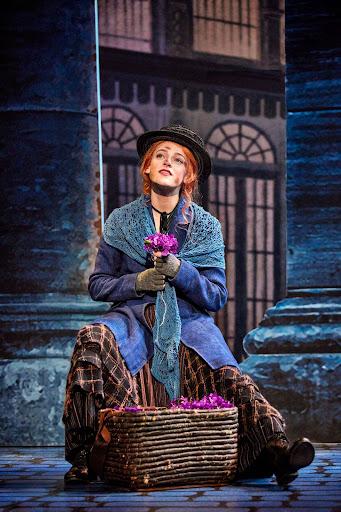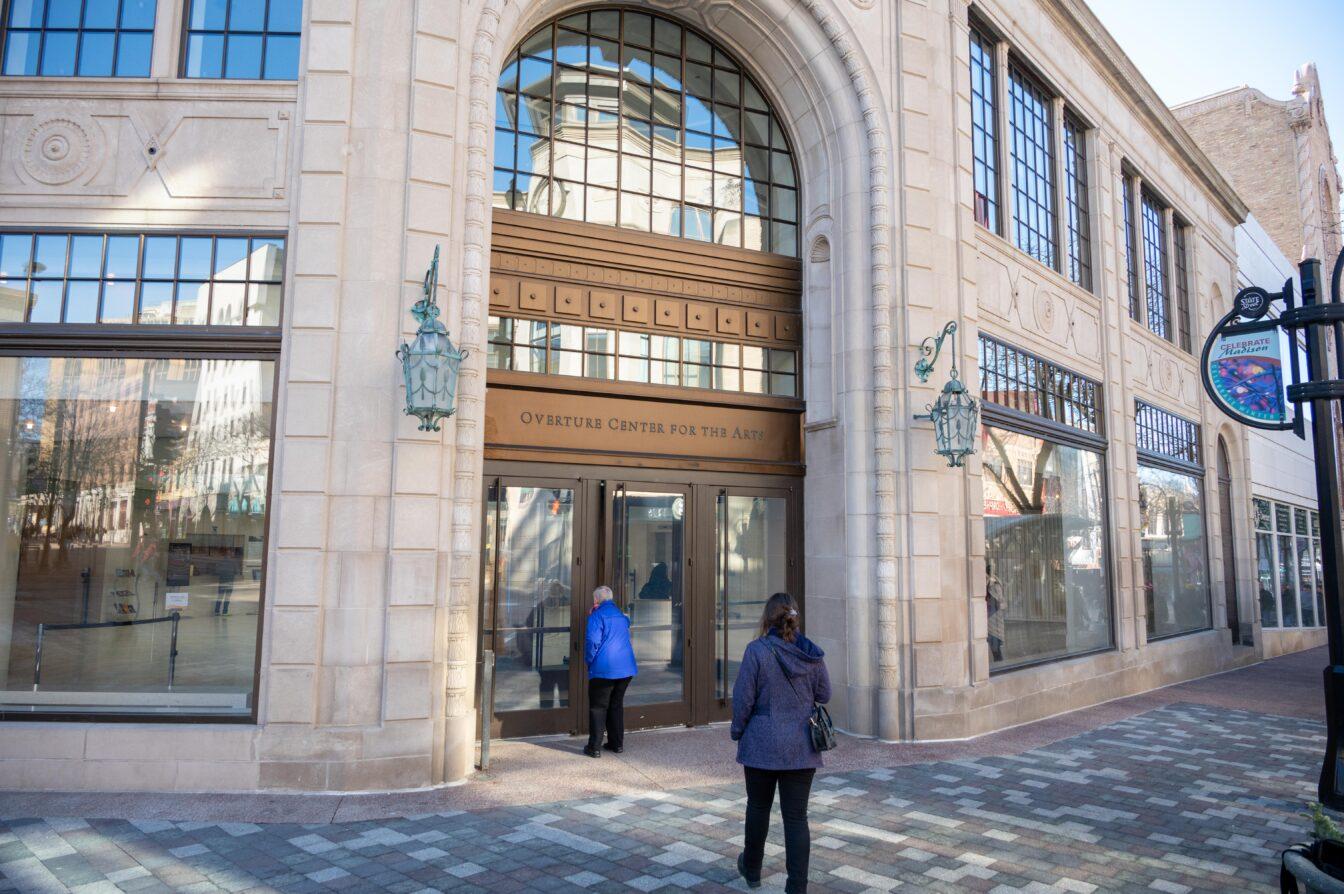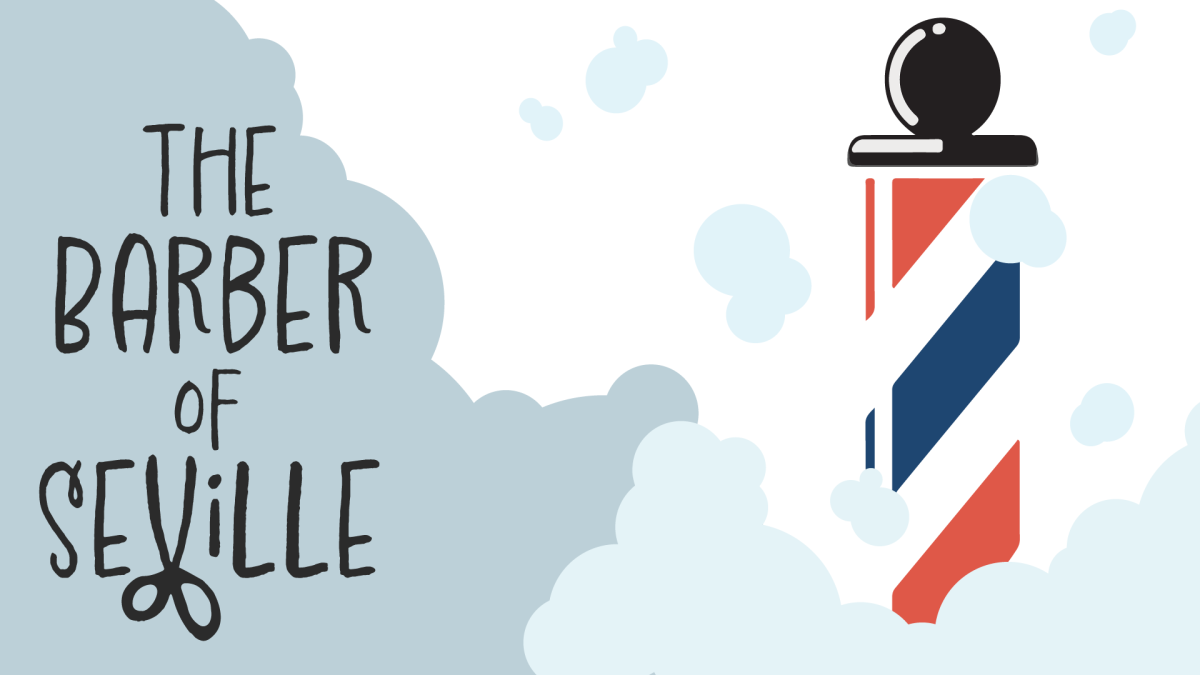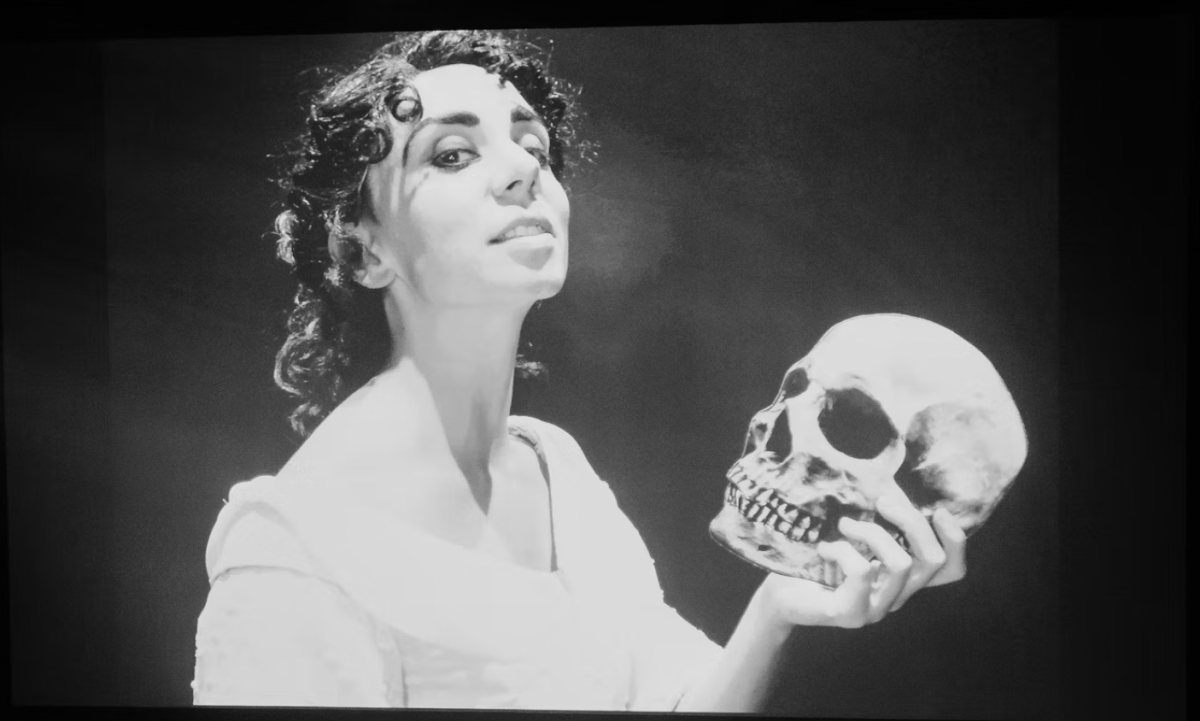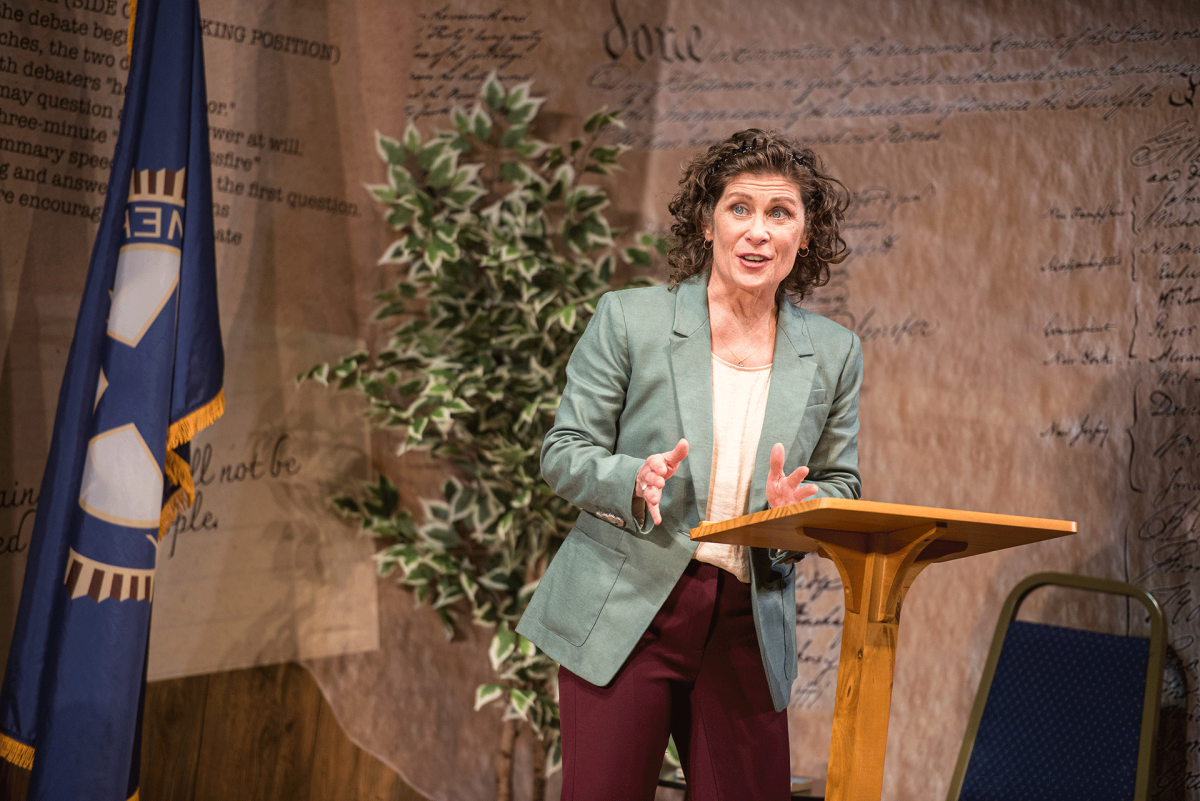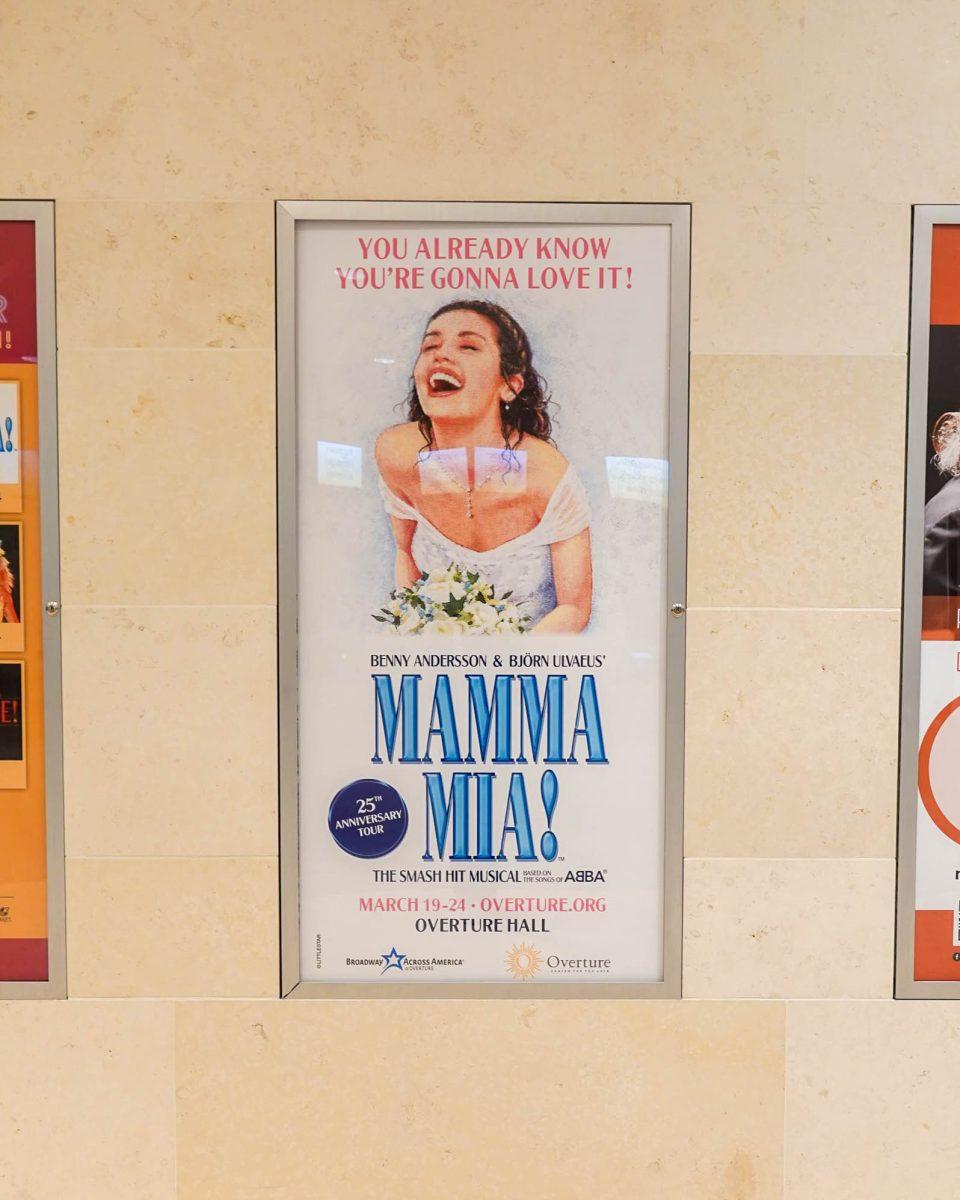From Nov. 21-26, the timeless tale of “My Fair Lady” will be performed at the Overture Center with a modern twist. Described by the New York Times as “one of the most original and exciting directors,” Bartlett Sher brings this musical to life for the second time on national tour.
Professional opera singer and Broadway performer Maeghin Mueller has been with “My Fair Lady” for two national tours, performing a range of different characters. Currently delighting audiences with her witty Mrs. Pearce, one of the central characters in the musical, Mueller gives us an exclusive look into this meaningful yet humorous production.
Growing up singing and acting, Mueller gravitated towards the stage. Considering her mom’s favorite musical was “My Fair Lady,” she was ecstatic to join the cast on Broadway.
Unfortunately, past versions of “My Fair Lady” haven’t always conjured up the most positive associations, as critics have cited misogynistic undertones in the plot. The plot they speak of goes something like this — Eliza Doolittle, a lower-class girl selling flowers on the street, is seen by linguistics professor Henry Higgins. Higgins makes a bet that he can transform Eliza into a woman of high society as his experiment. His treatment of her is demeaning. After Higgins has transformed her into a ‘respectable’ woman, Eliza decides to stay with Higgins as his romantic partner when she has the choice to leave and marry someone else.
Mueller explained how these critics will be content with this version, considering Eliza pays for her own lessons from Higgins and symbolizes a self-made woman with roots as an orphan from the slums. While the older version of Fair Lady is somewhat of a love story with unequal power dynamics between Higgins and Eliza, this version is still a story of love — just a bit different.
“It’s really about Eliza’s love of herself,” Mueller said.
Giving agency to more female characters comes along with plot changes. One of the biggest challenges of this that Mueller recognized is older audiences have trouble reconciling the necessity of a more progressive plot with the traditional musical they know and love. It makes sense they prefer to see the musical the way they expect it to be.
But, these audiences may not know the new adaptation pays homage to tradition.
Mueller said Sher holds routine cast meetings to discuss pulling text from Pygmalion, the original play by George Bernard Shaw which inspired “My Fair Lady.” Shaw himself was a feminist who supported women’s voting rights and believed marriage was immoral because it trapped women. Going back to the traditional roots of “My Fair Lady” reveals progressive thought.
Additionally, many of Higgins’ “cringey” lines, as Mueller described it, remain in the show. At one point Higgins references that he wants to find Eliza since he paid five pounds for her. Mrs. Pearce raises her eyebrows at the crowd with a look that makes a fool out of Higgins. While this line remains in the musical, his words are made into a mockery.
This occurs numerous times throughout the musical.
“A main part of Mrs. Pearce is to point out Henry Higgins’ ridiculousness and give the audience opportunities to laugh at him and his misogyny” Mueller said. “The way that he treats Eliza is not okay. Mrs. Pearce is essential in that way to let the audience laugh at it.”
Many members of the audience probably know a few guys like Higgins too, and to connect over the joy of shared experiences is more positive than to be saddened by harsh realities. “My Fair Lady” fuses historical and modern themes by acknowledging Higgins’ ignorance, all the while focusing on putting women of different classes and their experiences at the center stage.
The importance of this is emphasized by gleeful reactions from the audience. For Mueller, an experience she will never forget is when she performed Fair Lady at Indiana University. After the show, a group of female college students approached the cast, gushing over the empowering performances of characters like Eliza and Mrs. Pearce.
Younger audiences are also able to comprehend and love “My Fair Lady.” Mueller and the cast had a student production at one point, performing in front of high school and middle school students. At first, Mueller said, she was nervous the audience wasn’t getting it. Her fears eased when the audience loosened up and became vocally involved in the musical, crying out and laughing with excitement. During one of their hit numbers, “Get Me to the Church on Time,” male actors in corsets and feminine clothing come out and start dancing with an air of organized chaos. This crowd ate it up.
“[Get Me to the Church on Time] is a big, bombastic, 11 o’clock number,” Mueller said, citing the fun lighting and dancing in the number.
Other parts of the show most cherished by audiences include scenes featuring Eliza at the horse races and fight scenes between her and Higgins.
It’s a story that offers escapism in a different time and place, but still touches on relatable aspects and focuses on a heroine’s navigation and agency in her young adult life. Mueller said there’s something here for everyone to love.
Tickets are available for purchase online at The Overture Center’s website.


